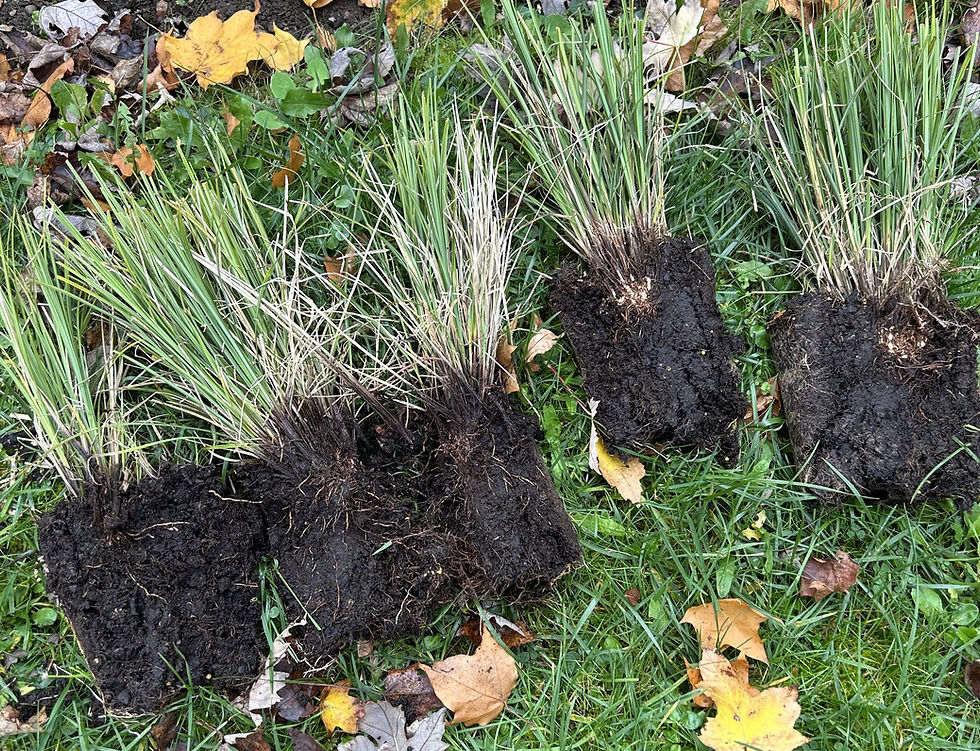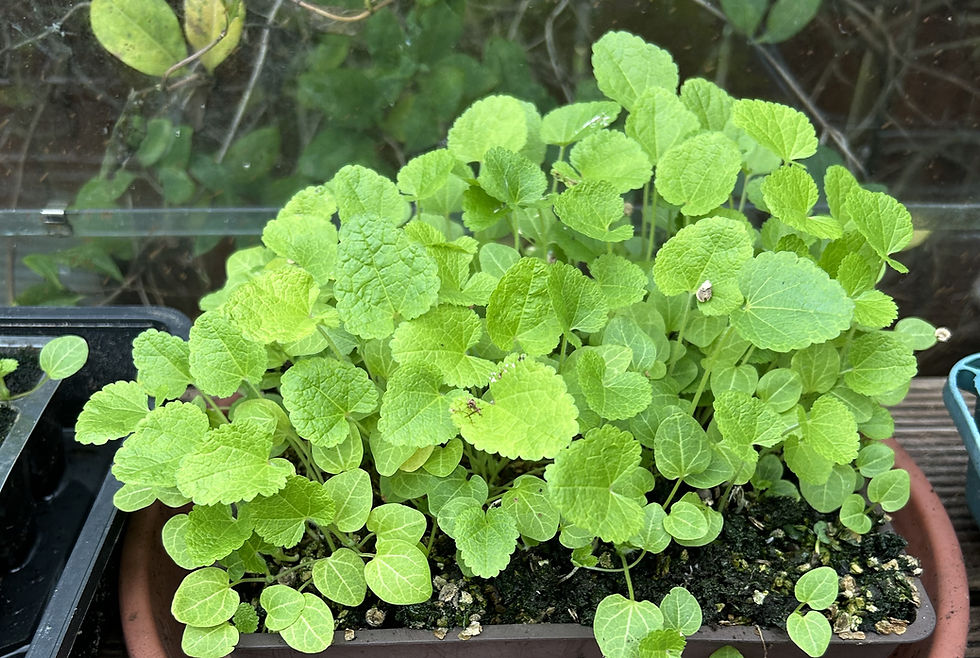Dogwoods for garden colour
- patrickwiltshire3
- Jan 10
- 4 min read

Cornus alba and its cousins, the winter-stemmed dogwoods, transform our gardens especially here in East Yorkshire. These shrubs illuminate our flower beds and add much-needed colour when all's sleepy and quiet in the cold months
So what's so special about dogwoods?
Dogwoods:
are fully hardy in the UK
low maintenance, brilliant for busy households
have bright-coloured stems in reds, oranges, yellows, greens and even purple
provide leaf-interest in summer and height in winter
make a great 'backbone' plant
often provide lovely autumn colour
they're easy to propagate
have an easy pruning-regime
Let me explain further;
Dogwoods are hardy in the UK; these plants can tolerate temperatures down to -30℃ so us gardeners in the UK and safe in the knowledge that dogwoods aren't going to succumb to coldness, be it Yorkshire, the Chilterns or the Highlands.
Dogwoods are low-maintenance. Once you plant dogwoods they'll look after themselves. Be sure they're planted in damp and rich soil, and enjoy a bit of shade and a bit of sun. I advise to keep a watch on the soil especially during dry spells in the summer. Other than this nugget of advice enjoy seeing your dogwood plants look after themselves.
Dogwoods have bright-coloured stems to admire through the window in winter. Take a look at this spectrum of colour which dogwoods have to offer and choose according to your tastes.
Red = Cornus alba 'Sibirica'
Yellow = Cornus sericea 'Bud's Yellow'
Orange and yellow = Cornus sanguinea 'Midwinter Fire'
Green = Cornus sericea 'Flaviramea'
Purple/black = Cornus 'Kesselringii'

I recommend you have a bed planted with groups of 3-5 of a range of the dogwoods above underplanted with an array of spring-flowering bulbs. You'll have a flowerbed performing every day of the year; the bulbs in the spring, the variegated leaves of the dogwoods in summer (see above), the autumn leaf colour and then the rainbow stems in the winter.
Dogwoods add height and backbone to flowerbeds. Have you noticed that flowerbeds look tall, confident and colourful in the summer around June and July and then look flat and uninspiring in mid-winter? That because we gardeners need to cut down some of the stems to keep the borders tidy over winter.

Yes, it tidies your garden up nicely but it also flattens the garden somewhat in the colder months. But us gardeners can have height in our gardens even in January and February. But how.....
Add height to your flowerbeds by adding dogwoods- that's the answer. Dogwoods reach a height of around 1-2m and don't require cutting down at the end of the summer. So even when there is very little in flower through the colder months, dogwoods provide the 'backbone' to flowerbeds, keeping them at a visually-pleasing height and adding bright and evocative colours too.
Dogwoods are easy to propagate. I don't want to bombard you with gardening jargon so I'll keep it simple. What does 'propagate' mean? It means you can increase the number of dogwood plants in your garden cheaply and easily by taking hardwood cuttings.
From hardwood cuttings to established plants. Here's how.
Dig a 20cm trench in your garden somewhere- it can be anywhere (alternatively get containers at least 10cm deep.)
Select some stems in late summer/ autumn
Create pencil-thickness cuttings all along the stem. Snip the stems just below a bud and then just above a bud 15-20cm higher than the first snip.
Pop the 15-20cm cuttings along the trench (or in the containers) around 20cm apart.
Backfill with soil and water.
Give these cuttings a year to establish their roots in the soil, keeping the soil damp but not waterlogged throughout the year.
In late summer the following year replant the cuttings that should have rooted to where you want them to establish further and give you the gardener a great on-going performance.
I recommend you have a walk around a local nursery to see what dogwoods they're growing that would suit your garden or growing space. If they're a working nursery you may be able to pick up multiple plants at a lower-cost and you'll be helping out local businesses.
Dogwoods have an easy pruning-regime.
Do I need to prune dogwoods? Why?
Yes- for the maximum colour-intensity of the stems. The brightest-coloured stems are the young ones, vibrant and really luminescent in the low sunlight of the winter sun. Rest assured you only need to prune them once a year.
So when do I prune them?
Prune dogwoods in late-March. Enjoy the winter display especially in late-winter when surrounding aconites and snowdrops add to the impact.
Choose a sunny day, arm yourself with a sharp pair of secateurs and cut the colourful stems right down to the first pair of buds above ground level. It sounds drastic but once the spring turns to summer these stems with be growing to maximum height again, with an armour of lush leaves, often variegated (two-coloured).
A word of advice - if you plant dogwoods as young specimens leave them to establish for a couple of years first, before this annual pruning session each spring.
In conclusion dogwoods are a definite favourite of mine here in my East Yorkshire gardens. Hardy, colourful, well-behaved and easy on the eye. What not to love about these trusty shrubs?



